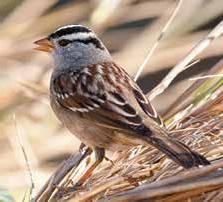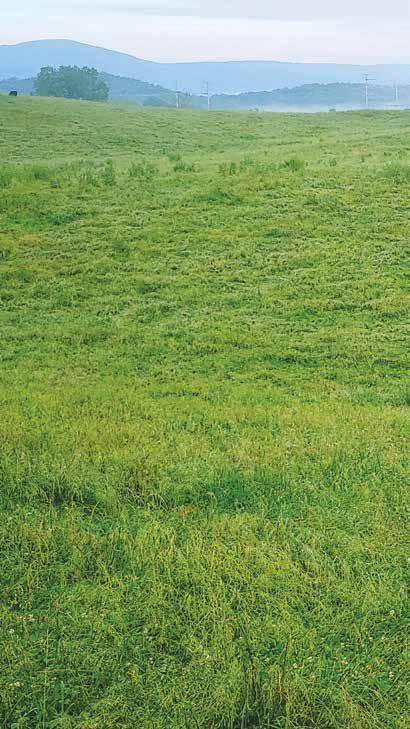
5 minute read
BIRDS IN BRIEF
Partners in Flight (PIF) is marking its 30th anniversary in 2020. A coalition of more than 150 conservation groups, including ABC, PIF aims to conserve the Western Hemisphere’s landbirds with this mission: “Keeping common birds common and helping species at risk through voluntary partnerships.” PIF brings together birders, scientists, and others to provide both data and a public voice for bird conservation. ABC’s David Pashley, who passed away in 2018, served as the first PIF National Coordinator. PIF has elevated the conservation of nongame bird species, especially migratory birds, with lasting contributions including the continental-scale Partners in Flight Landbird Plan, the Species Assessment Database, a peerreviewed process that prioritizes Western Hemisphere species in need of conservation action, and the now-well-known World Migratory Bird Day. Making a S.P.L.A.Sh along the Gulf Coast ABC, the Gulf Coast Bird Observatory, and Black Cat GIS are launching a new program designed to clean up marine debris in coastal and bay areas on the upper Texas coast. Called “S.P.L.A.Sh” (Stopping Plastic
Snowy Plover by Paul St. Clair, Shutterstock
Litter Along Shorelines), this program will work to directly reduce trash accumulating on coastal beaches and will also launch an education and outreach campaign to engage local communities, stakeholders, and natu-
ral resource managers.
Las Balsas Reserve Expanded
Fundación de Conservación Jocotoco, with support from ABC and Rainforest Trust, has taken the next step in efforts to conserve the Endangered Lilacine Amazon, a parrot found only in western Ecuador. Jocotoco purchased 46 long-term lease agreements with Ecuador’s Las Balsas community to protect the largest-known population of the species. Created in 2019 with the protection of 32 acres, Las Balsas now covers 246 acres, about a third the size of New York City’s Central Park.
California Bans Deadly Rodenticides
In September, California Governor Gavin Newsom signed a bill that prohibits most uses of second-generation anticoagulant rodenticides (SGARs). These potent poisons are used to kill mice and rats, but also accumulate in and kill wild animals up the food chain, including owls and other raptors, as well as mammals such as Bobcat and Mountain Lion. The bill was enacted in response to studies that showed that detectable levels of SGARs in wildlife had not declined. Although a consumer ban on the products was enacted in 2014, commercial pestcontrol operators have continued to use them.

Hawaiian Petrels Returning to Kaua‘i
Hawaiian Petrels translocated as chicks and fledged from the Nihoku Restoration Site at Kīlauea Point National Wildlife Refuge continue to return after several years at sea. To date, five banded Hawaiian Petrels from the 2016 and 2017 cohorts of translocated chicks have returned, and two pairs have shown interest in the artificial nest boxes.
Hawaiian Petrel chick by Jason Gregg
Project partners hope additional birds will return to Nihoku to nest within protective fencing there. The ultimate goal is to establish a thriving new colony of these seabirds that is safe from introduced predators.
Horseshoe Crabs by Mike Parr

COVID-19 and Crab Blood
Bleeding horseshoe crabs for the extraction of Limulus amebocyte lysate (LAL), used to test the purity of drugs, has always been a threat to the animals, with a mortality rate of around 30 percent. Now, as scientists work to develop a vaccine for COVID-19, horseshoe crab blood is in even higher demand, further threatening these primitive invertebrates and the shorebirds that depend upon them as a key food source during migration. A synthetic alternative to LAL exists and is used in Europe, but it has not yet been approved in the United States. Learn more: Horseshoe Crab Recovery Coalition: hscrabrecovery.org
Eastern Black Rail Gains ESA Protection
The eastern population of the Black Rail has been listed by the U.S. Fish and Wildlife Service as Threatened under the Endangered Species Act (ESA). This elusive, thrush-sized bird has all but disappeared from many parts of its range. The Atlantic Coast Joint Venture (ACJV), with which ABC partners, is one of the parties that will help guide actions aimed at this population’s recovery. The ACJV recently released the Black Rail Management Plan: bit.ly/BlackRailPlan

Meanwhile, the Red-cockaded Woodpecker was proposed for downlisting from Endangered to Threatened. Learn more: bit.ly/ WoodpeckerDownlisting Red-cockaded Woodpecker by USFWS
Black Rail by Agami Photo Agency, Shutterstock
Wildlife Protection Provisions Part of House

Energy Bill
In September, the U.S. House of Representatives passed H.R. 4447, an energy bill that includes a number of important provisions to advance the conservation of birds and their habitats.
The House energy bill, which proposes to expand renewable energy development, also includes key provisions to promote the use of distributed solar technologies and to mitigate and avoid impacts to birds and other wildlife from industrial solar and wind energy facilities.
The bill was sent to the Senate in October. If there is another COVID-19 relief, stimulus, or infrastructure bill this year, this provision could become law as part of that package.
Pandemic Shutdown a Boon for Singing Sparrows
A study published in the journal Science in September revealed that during the pandemic, San Francisco’s quieter streets provided the perfect backdrop for urban White-crowned Sparrows to up their singing game.
Prior study by University of Tennessee, Knoxville behavioral ecologist Elizabeth Derryberry revealed that the city’s Whitecrowns strained to be heard above traffic noise. The pandemic changed that. Derryberry and her colleagues found that with the drop in street noise, basically at mid-1950s levels, the birds’ songs greatly improved in quality and reach. By comparison, rural birds in Marin County did not change their songs.
The study underscores the stresses faced by urban wildlife, and birds’ resiliency in the face of sudden changes.
Johanna van de Woestijne White-crowned Sparrow by






